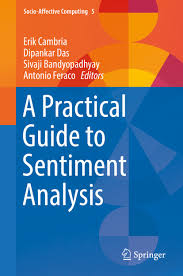“Cambria Brief Introduction” is a publication authored by Erik Cambria and published in 2021. It serves as a practical guide to sentiment analysis, a vital field in natural language processing (NLP) that involves determining the emotional tone behind a piece of text. Here’s a summary of the key points covered in the brief introduction:
- Definition of Sentiment Analysis: Sentiment analysis, also known as opinion mining, is the process of computationally identifying and categorizing opinions expressed in text data. It involves analyzing subjective information to determine the sentiment or emotional state of the writer.
- Applications: Sentiment analysis has a wide range of applications across various industries. It is used in market research to gauge customer opinions, in social media monitoring to track public sentiment, in brand monitoring to understand customer satisfaction, in political analysis to assess public opinion, and in customer service to analyze feedback.
- Challenges: Despite its usefulness, sentiment analysis faces several challenges. These include dealing with sarcasm, irony, and ambiguity in language, handling context-dependent sentiments, managing multilingual data, and ensuring accuracy across different domains and cultures.
- Techniques: Various techniques are employed in sentiment analysis, including lexicon-based approaches, machine learning algorithms, deep learning models such as recurrent neural networks (RNNs) and convolutional neural networks (CNNs), and hybrid methods that combine different approaches.
- Tools and Libraries: There are many tools and libraries available for sentiment analysis, such as NLTK (Natural Language Toolkit), TextBlob, VADER (Valence Aware Dictionary and sEntiment Reasoner), and spaCy. These tools provide pre-trained models and APIs that make it easier to perform sentiment analysis tasks.
- Future Directions: The field of sentiment analysis continues to evolve, with ongoing research focusing on improving accuracy, handling different languages and cultures, addressing the challenges of contextual understanding, and developing more efficient algorithms and models.
“Cambria Brief Introduction” serves as a valuable resource for anyone interested in understanding the basics of sentiment analysis and its practical applications in various domains.
